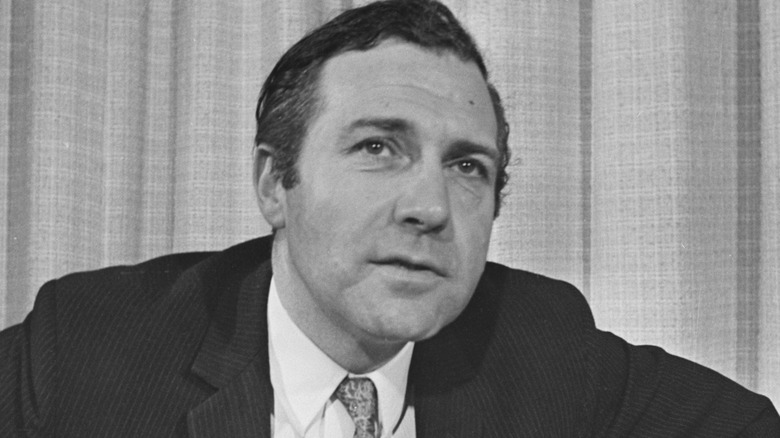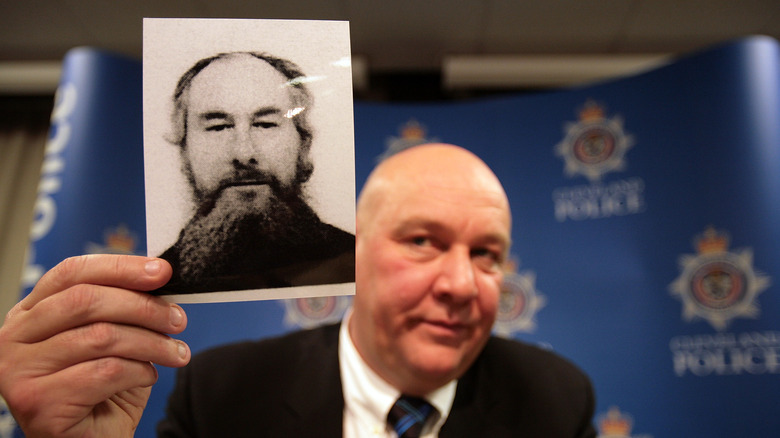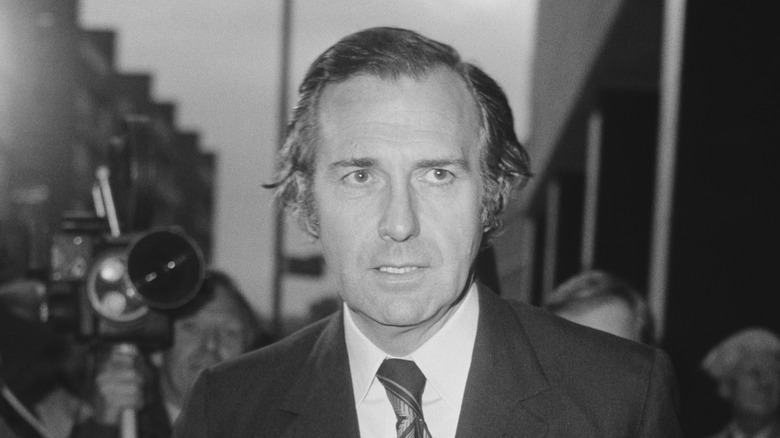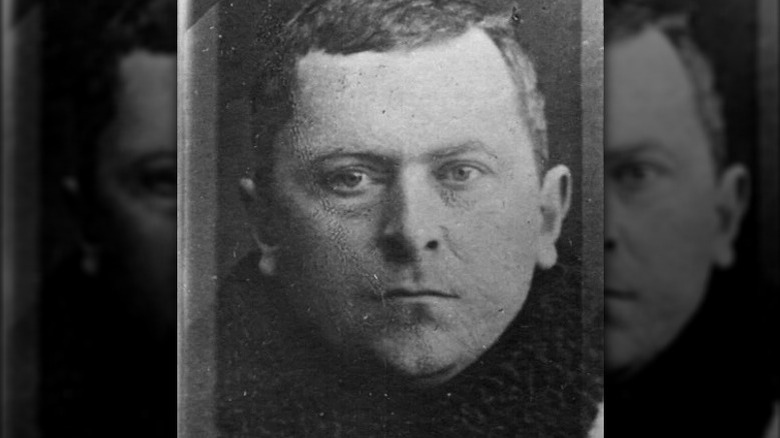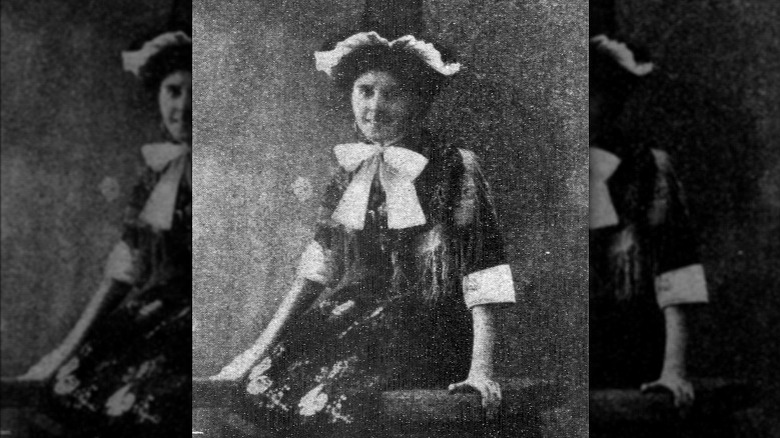People Who Actually Got Caught After Faking Their Deaths
Sometimes, in the middle of a bad day, you might stare out the window and think about what it would be like to disappear somewhere and start over. Or at least get somewhere out of the reach of all your work emails. You might even Google tips on disappearing. But, even then, you know it's just a weird daydream to keep you sane, and there's no way you'd ever actually take off. After all, the best way to disappear is to fake your own death, and that can take a lot of work to pull off.
While there are probably hundreds of people who have managed to fake their deaths and move on to living the life they hoped would be better, there are definitely a whole lot of people who faked their deaths and then got caught. It's not just modern cases where the ping off a cellphone tower or an uncleared internet search history can blow your cover. Even decades ago, in less technological times, there were those who planned a fake death but didn't seem to plan what they would do after, leading to their discovery.
Regardless of what decade they lived or why they wanted to run away and start over, the men and women on this list have one thing in common: they failed at playing dead.
John Darwin
On March 21, 2002, Englishman John Darwin took a canoe out to sea and was swept away. His wife, Anne Darwin, reported her husband missing to the police, but his body was never found. Over the next few years, she started rebuilding her life until, in 2007, she finally told her sons she needed to move on and was going to emigrate to Panama. Later that same year, John Darwin walked into a British police station with amnesia, having no idea what had happened to him over the past five years. It was an astonishing story — and all a con to collect on his life insurance policy.
The Darwins were caught in their elaborate lie when a recent photo they had taken together in Panama was discovered online. For years, John had secretly lived in their home, and even had a library card, but moving to Panama would afford him more freedom. However, new visa rules ended up making that plan impossible, so he returned to England and miraculously reappeared.
Both John and Anne spent time in prison for their scheme. Their sons, who thought their father was dead for five years, disowned them — although they have since rebuilt a relationship with their mother. John and Anne divorced, and while she has stayed single, he remarried and lives in the Philippines. At least, he did until 2022, when his second wife told The Mirror he'd gone to Ukraine to fight the Russians.
Joan of Leeds
While the population in England used to be much more religious, specifically Christian, as a whole, that didn't mean everyone who ended up living the life of a monk or nun enjoyed it. According to medieval historian Sarah Rees Jones, it's not uncommon for researchers to find comments about men and women who ran away from their restrictive religious lives. But Joan of Leeds went to a lot more trouble than most.
Records from 1318 (pictured) explain how Joan escaped her convent: "Having impudently cast aside the propriety of religion and the modesty of her sex; out of a malicious mind simulating a bodily illness, she pretended to be dead, not dreading for the health of her soul, and with the help of numerous of her accomplices, evildoers, with malice aforethought, crafted a dummy in the likeness of her body in order to mislead the devoted faithful and she had no shame in procuring its burial in a sacred space amongst the religious of that place."
With so many people helping her out, Joan must have had a good reason to want to flee her cloistered religious life. And once she did, she had a lot of fun: The records describe with medieval fustiness how she pursued a life of sexual abandon, though what this actually meant is unclear. Sadly for us, it's not recorded if Joan ever returned to the convent or kept her freedom.
John Stonehouse
John Stonehouse was, to put it bluntly, a real piece of work. The British MP was at one point seen as a potential future prime minister, but thanks to every decision he made being the worst possible, that didn't happen. Instead, while a Cabinet minister in the British government, he got himself mixed up with Czechoslovakia, and there is ample proof he spied for the country — although his daughter fervently disputes this. In 1969, Stonehouse was investigated over the spying rumors, and while he stayed an MP, his access to any real power was over. This meant he could spend his new free time doing other terrible things: As well as having an affair with his then-secretary, who was 21 years younger than him, Stonehouse started a bank that was almost completely a scam in 1972. By 1974, it was clear his misdeeds were catching up with him.
In 1974, clothes left on a beach in Miami indicated that Stonehouse had gone swimming and drowned. In reality, he had fled to Australia, where his terrible attempts to cover his tracks meant he was discovered only weeks later. Yet he remained an MP, even while in prison after being convicted of fraud, until finally resigning in 1976.
To this day, even Stonehouse's family doesn't understand exactly what happened. His great-nephew, who wrote a book on Stonehouse, told the ABC, "I don't think anybody really knew him. He led a number of different lives. And the only person who really knew him was himself."
Aleksandr Uspensky
Working for Joseph Stalin was notoriously dangerous. You could be in his favor one day and dead the next, followed by being literally erased from history. During the "Great Purge," everyone, including the men of the security service known as NKVD, was a possible victim, even though the NKVD were the ones in charge of much of the purging.
By 1938, things had gotten very bad for these men, as Stalin was feuding with and removing many of their superiors. Some died by suicide before they could be tortured and killed. Perhaps the fact some were actually completing suicide was why Aleksandr Uspensky thought he could get away with faking his own. According to "Stalin: Waiting for Hitler, 1929-1941" by Stephen Kotkin, on November 14, 1938, Uspensky wrote a fake suicide note and left some of his clothes by the Dnieper River in what is now Ukraine, as if he'd gone there to kill himself. In reality, he got on a train and fled to, of all places, Moscow, where he stayed with his mistress. (His wife can't have been happy, considering she assisted Uspensky in his escape.) Eventually, having run out of money and been kicked out by his mistress, he tried to keep one step ahead of anyone looking for him.
It took five months, but finally, on April 16, 1939, the manhunt Stalin ordered found its man. Uspensky was arrested at a train station; his mugshot is pictured above, and he was subsequently executed.
Violet Charlesworth
As the goddaughter of a famous general, Violet Charlesworth had been left £100,000 (or as much as $2.5 million, according to contemporary reporting in The New York Times), with the catch being she could not touch it until she turned 25. However, she managed to live a life of luxury for years before that. Thanks to her looks and charm — plus the prospect of a vast inheritance — men were very attracted to Charlesworth, and several gave her large sums of money that she promised to pay back as soon as she turned 25 and got her windfall. Shops also let her run up huge amounts of credit, expecting to be paid back from her inheritance. Charlesworth particularly liked cars and owned several expensive ones. She also always drove herself, even though her family employed a chauffeur who, ironically, would sit in the car while she drove around.
In reality, there was no inheritance; it was just a massive scam. And the problem with setting a firm date on which Charlesworth would supposedly get all this money was that, eventually, she would turn 25. So, a few days before that birthday, Charlesworth went out for a drive with her chauffeur and sister. According to them, Charlesworth ran the car into some rocks on a cliff edge and went flying into the sea. Her body was not found, but she was assumed to be dead.
About a week later, she was discovered hiding in Scotland. She would serve two years in prison for her financial fraud.
Chandra Mohan Sharma
In 2014, Chandra Mohan Sharma was found burned to death in his car, and the police suspected he'd been murdered. As a member of a controversial socialist party in India and an outspoken activist, death threats were not unexpected. In fact, he'd reported one to the authorities only a few days before he died.
Or rather, a few days before he faked his death. There was a body in the car, but it was burned beyond recognition, so no one could tell it wasn't Sharma. Tragically, it was actually an unhoused man suffering from mental health issues that Sharma had lured to the car and then strangled, before setting it alight. Then Sharma took off with a young woman; it was supposedly his unhappiness in his marriage that Sharma blamed for making him go to such evil lengths. Just three months after his faked death, Sharma was apprehended, very much alive in Bangalore.
Amazingly, Sharma had an accomplice in all of this: his brother-in-law Videsh. How in the world could Sharma convince his wife's brother to help him kill a man, fake his death, and leave him free to move in with another woman? A police superintendent explained, "He narrated his family problems to Videsh and said if his death was staged, Videsh's sister would get a job and money from insurance policies that Sharma had." Sharma's wife had nothing to do with the scheme, and believed her husband only did it because he was being blackmailed.
Philip Sessarego
Before the U.S. invaded Afghanistan in the 21st century, the Soviet Union did the same in 1979. Agents from Western countries like the U.K. helped train the mujahideen in their fight against the USSR, as recorded in the best-selling book "Jihad!," released in 2000. According to the book's blurb, its author was "Tom Carew, the first Western agent to link up with the mujahideen, [who] led a series of daring initiatives inside Afghanistan" while serving in the elite British SAS regiment. After 9/11, Carew gave TV interviews as an expert on Afghanistan.
It was those appearances that led to his story falling apart. Carew was really Philip Sessarego, and according to the daughter he'd abandoned years before, "Dad was obsessed with wanting to be in the regiment. He took the SAS selection test a couple of times but failed, and that really crushed him. I think he decided if he couldn't be the real thing, he would pretend ... He used to wear desert boots and jeans or combat trousers and a check shirt and would hang out in the pubs where SAS men drank" (The Mirror, via The Free Library).
His deception didn't end there. In 1991, Sessarego had faked his death, with various sources saying it was supposed to be a car bomb or landmine in either Croatia or Bosnia that killed him. But then he turned up on TV a decade later, and his fantasy life and death were exposed. As a result, Sessarego fled to Belgium, where he was found dead in 2009.
Audrey Marie Hilley
On a cold day in 1987, with rain pouring down, Janice Hinds found a woman outside her home who was near death and tried to help her. While Hinds didn't recognize her at the time, it turned out she knew the woman from childhood. "We didn't know she was Marie Hilley. She didn't look like Marie Hilley," Hinds told the Orlando Sentinel. "Marie Hilley was a sophisticated lady. She had pride in her looks, her dress." Sadly, Hilley did not survive the hypothermia that had set in — or it would be sad had she not been the notorious murderer Audrey Marie Hilley, known as the "Black Widow," who had escaped from prison days earlier.
In 1975, her first husband died of hepatitis, or so it seemed. When Hilley's teenage daughter got very ill four years later, and tests showed she had a whole lot of arsenic in her system, authorities put two and two together. An autopsy revealed that, yes, Hilley's husband had actually been poisoned.
Hilley went on the run and, during that time, got married again. However, her second husband was then informed she had died during a trip to Texas. While it would have been easy to keep hiding after faking her death, Hilley instead returned to her second husband after losing weight and dying her hair, claiming to be her own (nonexistent) twin sister. Somehow, this story fooled everyone until 1983, when police questioned her about an unrelated crime, and Hilley confessed. She was sentenced to life for murder and attempted murder.
David Friedland
In a decision by the U.S. Court of Appeals in the case of United States of America v. David Friedland, the justices declared, with a heavy dose of understatement, "The case has an extraordinary background." When Friedland died in 2022, a writer for Politico reflected that his life should be adapted into a film.
You can't say that about many state-level politicians from New Jersey, but Friedland had quite a cinematic, if criminal, life. He not only plotted to sabotage his own party in 1971 in exchange for more political power for himself, but he got his father involved in an illegal kickback scheme involving the Teamsters' Union. Eventually, the federal government arrested Friedland, but he didn't much like the idea of going to jail once he was convicted. So in 1985, Friedland arranged for it to look like he'd died while scuba diving in the Bahamas, which does raise the question of why the Feds allowed him to go on a scuba diving vacation in a foreign country while he was awaiting sentencing.
The Feds weren't convinced by the ruse and kept looking for Friedland as he ran around the world, eventually settling in the Maldives. There, with a sense of irony, he began a scuba diving business so successful that it led to his being apprehended. Finally behind bars, he told the Chicago Tribune, "If my life ended today, I would be content. I have lived a very full life. I never get bored. I'm like a whirlwind of energy, even in here."
Marcus Schrenker
The Schrenker family lived a life of luxury, with all the vulgar and showy trappings of wealth you might expect from a successful money manager. "The first time I met the family," a neighbor told The New York Times, "I thought, 'These are the most beautiful people I have ever seen.'" Patriarch Marcus Schrenker combined his love for flying — he had his own plane — with his job, representing Delta pilots in various cases involving their pensions and the company's bankruptcy. Still, for a high-powered businessman, he had a lot of free time, according to one of his acquaintances: "He didn't really seem to have a job."
It turned out Schrenker wasn't doing much, if any, of the work he was claiming to do, and had defrauded investors in the past. When the ruse caught up with him, he disappeared. Or that was the plan: He tried to fake a deadly plane crash, when in reality, he parachuted safely out. But enough went wrong that authorities didn't quite buy it. He was caught only a few days later and sentenced to 10 years.
Schrenker's crimes left his daughter impoverished. "He has almost two personalities," a friend told The Indianapolis Star (via The New York Times). "There was the one that I knew, which was the family man. There was another guy that I didn't know, the one you heard the stories about. People would be fearful of having business dealings with him because of previous dealings or stories they'd heard."
